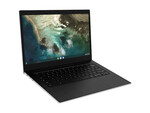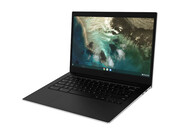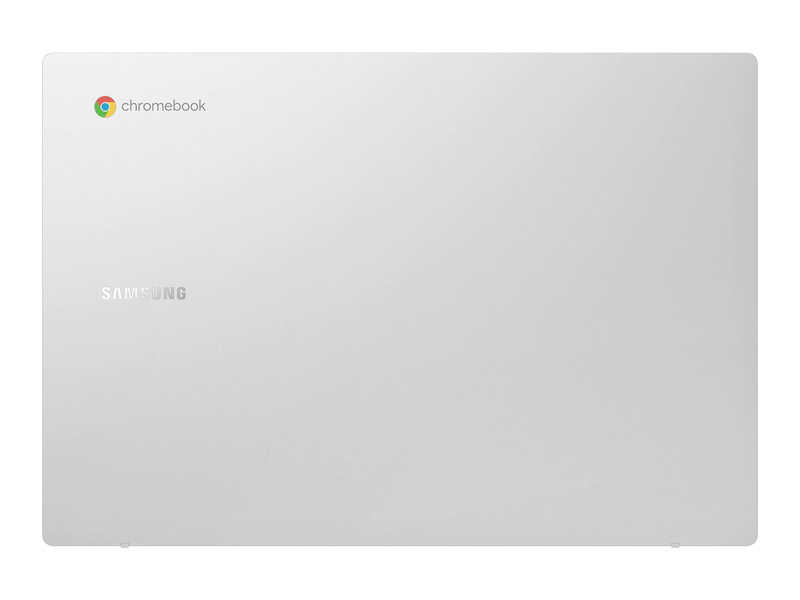Samsung Galaxy Chromebook Go 14 XE340XDA-KA1US
Especificaciones de Portátil(es)

Price comparison
Promedio de 6 puntuaciones (de 6 análisis)
Análisis para el Samsung Galaxy Chromebook Go 14 XE340XDA-KA1US
Origen: Gadgetspeak
 EN→ES Archive.org version
EN→ES Archive.org versionHaving recently told you about a Samsung Chromebook that comes with the latest version of Wimdows here is their Chromebook offering that was released at the same time. So here you get a Chromebook that can also allow you to get mobile data to keep you in contact while out of the office and as it has its own SIM so no nicking mobile data from your phone.
Único Análisis, disponible online, Muy corto, Fecha: 05/04/2022
Puntuación: Puntuación total: 80% precio: 60% rendimiento: 80% procesamiento: 60%
Origen: Tech Advisor
 EN→ES Archive.org version
EN→ES Archive.org versionThe Chromebook Go is very much a mixed bag. Using the keyboard is enjoyable, the audio is good and there is a decent selection of ports and connectivity options. If you’re looking for an LTE compatible Chromebook, then there isn’t a lot that offer that feature, so the Go can certainly put that among its boasts. Sadly, the main downside is the lacklustre display, which not only lacks brightness but also has poor viewing angles, colour and resolution. With Samsung marketing the Go as a student device, I can’t see too many being happy with streaming video that is difficult to enjoy, especially if doing so with other people. If you’re looking for a simple, reasonably affordable writing machine for documents, spreadsheets and research, then it’s a decent choice. But, anything outside of that will most likely leave you wishing you’d gone for a different device.
Único Análisis, disponible online, largo, Fecha: 01/11/2022
Puntuación: Puntuación total: 70%
Origen: Techradar
 EN→ES Archive.org version
EN→ES Archive.org versionReviewing the Samsung Galaxy Chromebook Go has been something of a rollercoaster. A simple one, with one big lift hill and a very quick drop. To the naked eye, if you can ignore its hulking bezels, this looks extremely well-appointed. It has a 14-inch screen, something you don't always see in the generally-smaller world of Chromebooks. It has a classy black inner and a stock silvery outer case. There are plenty of ports, one of which allows you to slot in an LTE SIM and get online wherever you might be. We started our time with it pretty excited. What could there possibly be to complain about? Hitting that point of inertia and rolling over the peak of the hill means hitting the power button, and reveals the true drama of this ride. There's a 14-inch screen alright, but it's 1366x768 and so low on contrast, color, brightness and even sharpness it disappoints in every respect other than size.
Único Análisis, disponible online, Mediano, Fecha: 01/11/2022
Puntuación: Puntuación total: 60%
Origen: PC Mag
 EN→ES Archive.org version
EN→ES Archive.org versionThere are a few worse and weaker Chromebooks than the Samsung Galaxy Chromebook Go, but there are many far better ones. Its performance is in the dictionary under "torpor," and its screen not only has the 1,366-by-768 resolution we thought we'd long since relegated to 11.6-inch Chromebooks but is dimmer and harder to view than they are. If you watch retailers for sales, you can find superior deals. (It was a Black Friday price, but at this writing Best Buy offered a 14-inch Lenovo Chromebook with a 1080p touch screen and twice the storage for $100 less.) The Galaxy Chromebook 2 at least has its QLED display to recommend it, but the Go reminds us of General Motors' attempt to sell the Chevy Nova in Mexico—no va in Spanish means "does not go."
Único Análisis, disponible online, Mediano, Fecha: 11/11/2021
Puntuación: Puntuación total: 40%
Origen: Tweakers
 NL→ES
NL→ESAnálisis del Usuario, disponible online, Muy corto, Fecha: 09/11/2023
Puntuación: Puntuación total: 100%
Origen: Lyd og Billede
 DA→ES
DA→ESÚnico Análisis, disponible online, corto, Fecha: 08/26/2023
Puntuación: Puntuación total: 67%
Comentario
Intel UHD Graphics (Jasper Lake 16 EU):
Tarjeta gráfica integrada en los modelos básicos de Intel Jasper Lake Celeron basados en la arquitectura Gen. 11. Ofrece 16 de las 32 UE (unidades de ejecución/clúster de sombreado). La velocidad de reloj depende del modelo de procesador y oscila entre 350 MHz de base y 800 MHz de refuerzo. Los chips Jasper Lake se fabrican en el proceso de 10nm de Intel (similar al Ice Lake).
Algunos juegos actuales no fastidiosos pueden ser jugados fluidamente con pequeños detalles.
>> Más información puede ser encontrada en nuestra comparación de tarjetas gráficas moviles y la lista de benchmarks.
Celeron N4500:
SoC de doble núcleo de bajo consumo de la serie Jasper Lake para portátiles económicos. Funciona con frecuencias de entre 1,1 y 2,8 GHz e integra un adaptador gráfico con capacidad para DirectX 12 con 16 UE y hasta 750 MHz. Los núcleos de la CPU son más pequeños y lentos que en los Core (por ejemplo, Ice Lake), pero están fabricados en el mismo proceso de 10 nm.
>> Más información puede ser encontrada en nuestra comparación de procesadores móviles.





